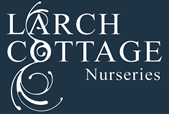Advice
Planting for Bees
How do I encourage insects into my garden?
Flying insects such as bees and hoverflies which visit flowers for their nectar and pollen perform a vitally important pollination service. Pollination is where the pollen from one flower is transferred to another flower, bringing about fertilisation. Some flowering plants are pollinated by the wind but the majority rely on this service from insects and without it plants would fail to produce seed and, in some cases, fruit.
Helping the bee population
Our wild bees and other pollinators are considered to be in decline. By planting nectar and pollen rich flowers over a long season, gardeners can help reduce this trend. In return, an abundance of pollinators will ensure garden plants continue to reproduce through seed and that many fruit and vegetable crops such as apples, strawberries and tomatoes successfully set fruit.
The National Pollinator Strategy (England), launched in Nov 2014, encourages gardeners to choose plants that provide resources for pollinators and endorses the RHS Perfect for Pollinators plant lists. The RHS is committed to helping to deliver the aims of the strategy and safeguard our bees and other pollinators for the future.
Which are the best plants for attracting insects to my garden?
- Aim to have plants that are attractive to pollinating insects in flower from early spring to late autumn. Winter flowering plants can also be of benefit.
- Grow garden plants with flowers that attract pollinating insects.
- Avoid plants with double or multi-petalled flowers. Such flowers may lack nectar and pollen, or insects may have difficulty in gaining access.
- Never use pesticides on plants when they are in flower.
- Where appropriate, British wildflowers can be an attractive addition to planting schemes and may help support a wider range of pollinating insects.
- Observe the plants in your garden. If you know of plants with blooms that regularly attract insects, let us know.
- Encourage bees by keeping honeybees yourself or allowing a beekeeper to place hives in your garden. Nest boxes containing cardboard tubes or hollow plant stems, or holes drilled in blocks of wood will provide nest sites for some species of solitary bees. Such nests are available from garden centres or you can make your own (holes/tubes should be in a mixture of sizes with a diameter of 2 – 8mm
Information supplied via the RHS Perfect for Pollinators initiative
To see the RHS ‘Perfect for Pollinators’ Plantlist click here

